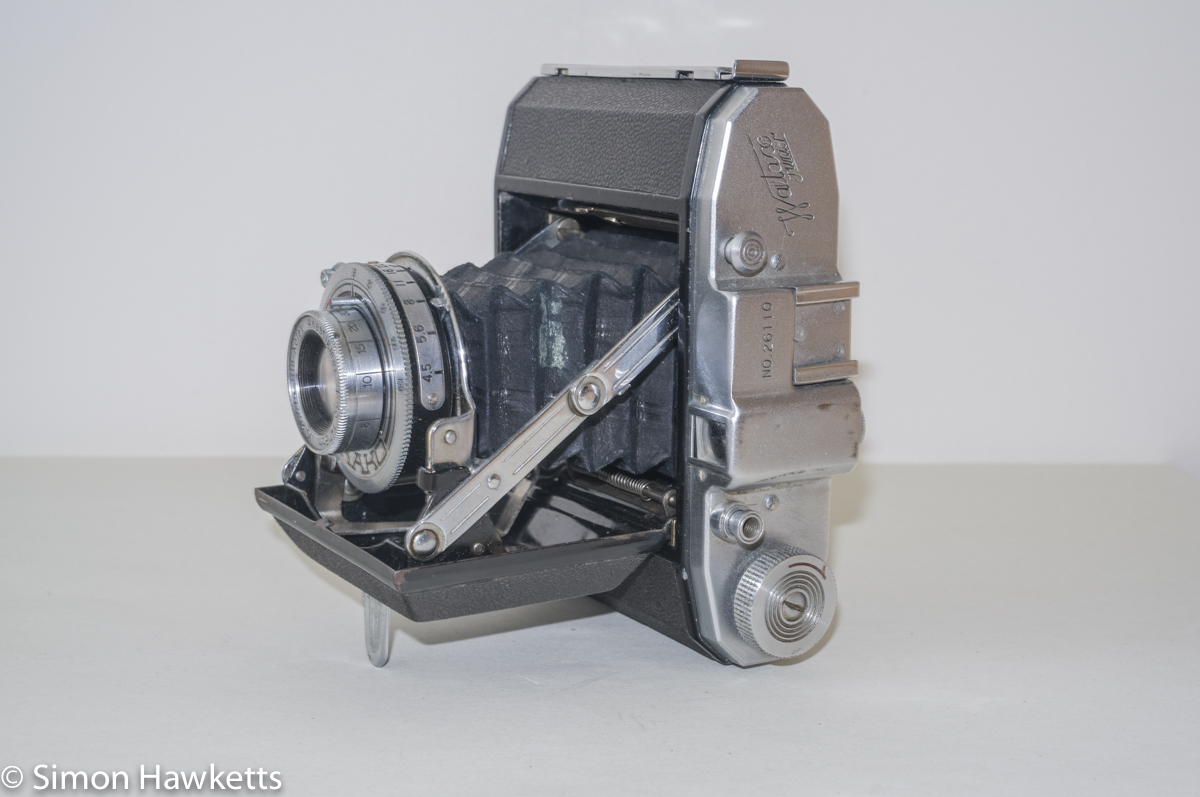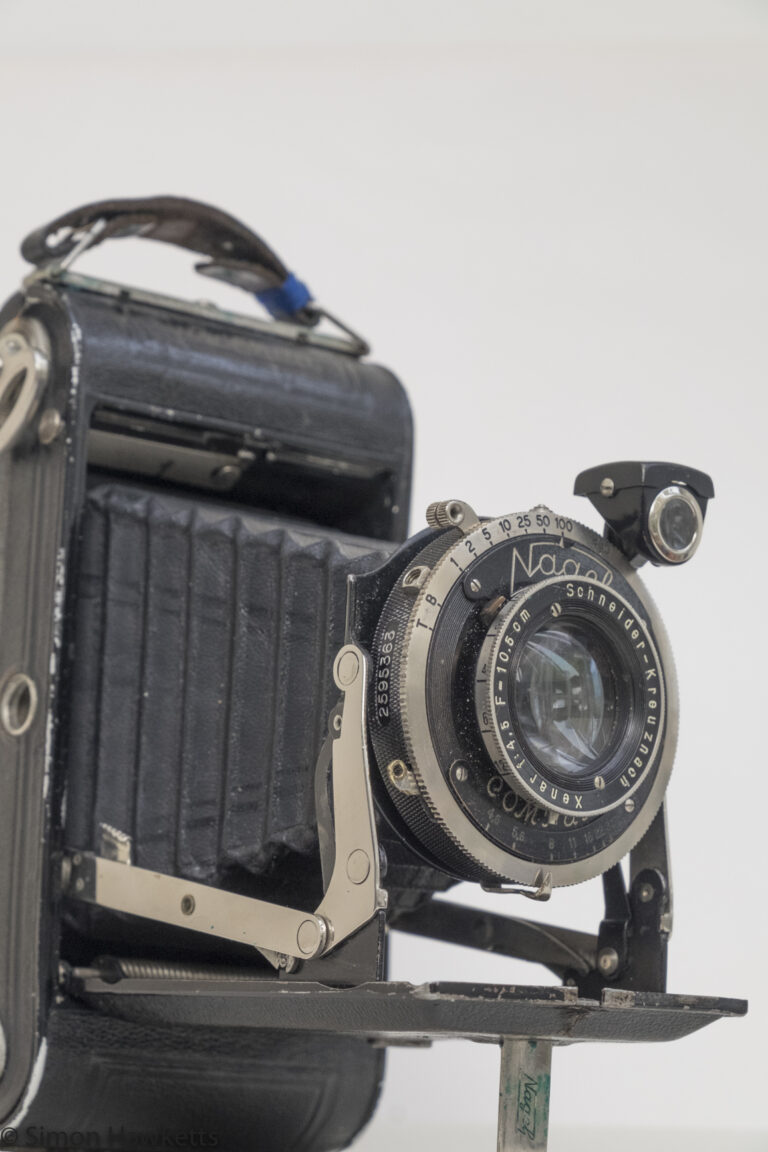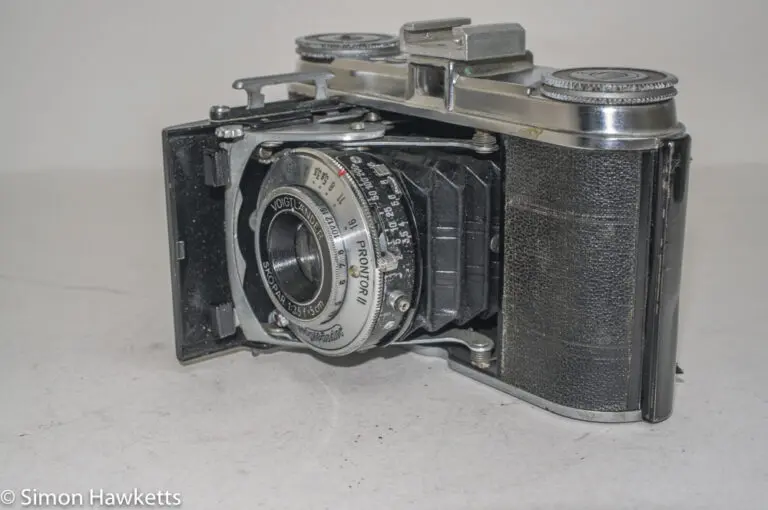Waltax Junior folding camera from 1952
The Waltax Junior is a 120 format, folding camera which was produced by Waltax in the early 1950s. It is a simple, cheap camera which was sold mostly as an entry level, holiday snapshot camera and that is reflected in the construction which is somewhat flimsy.
Waltax Junior Images
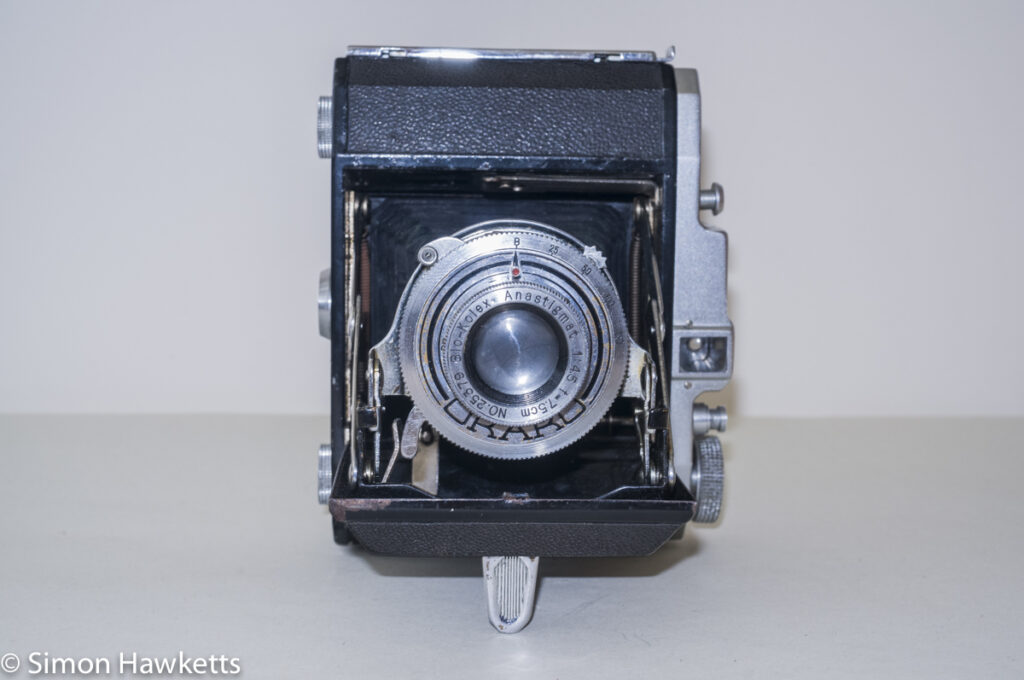
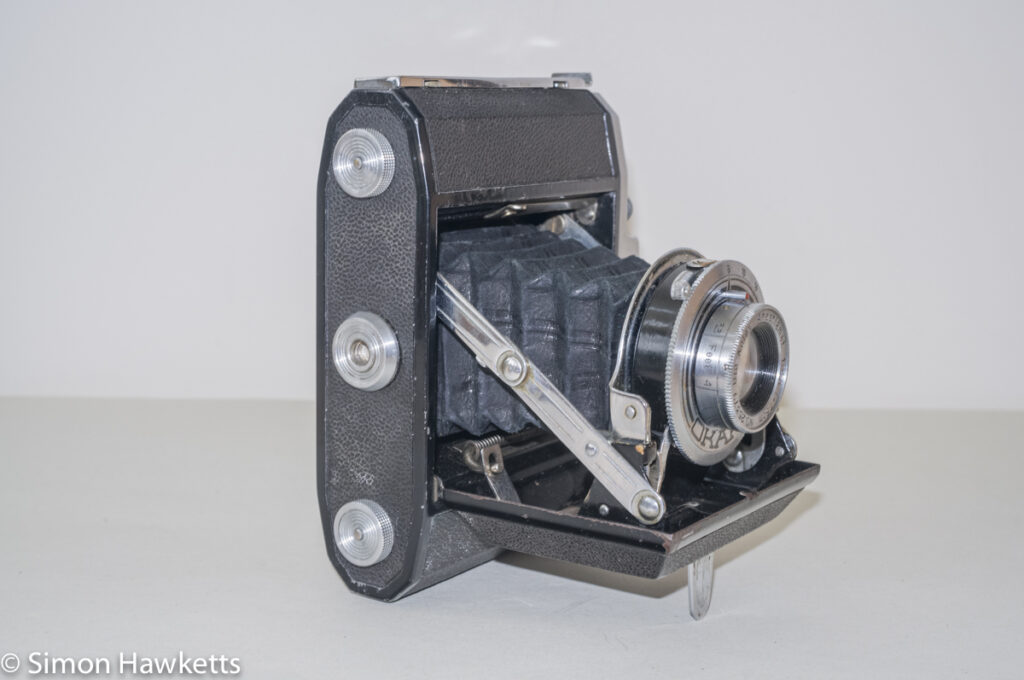
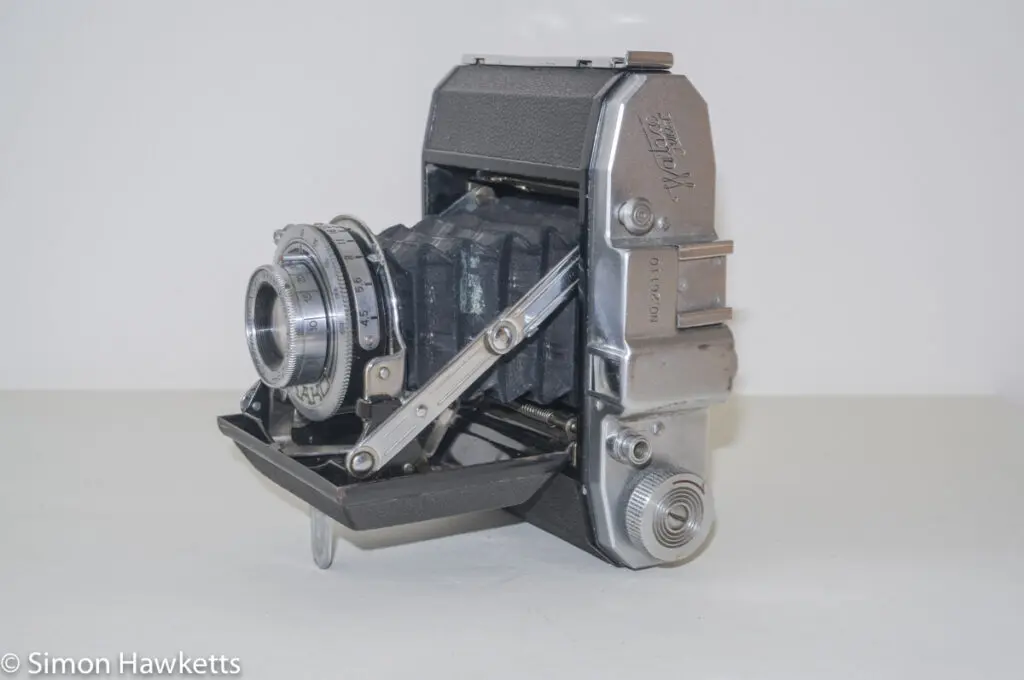
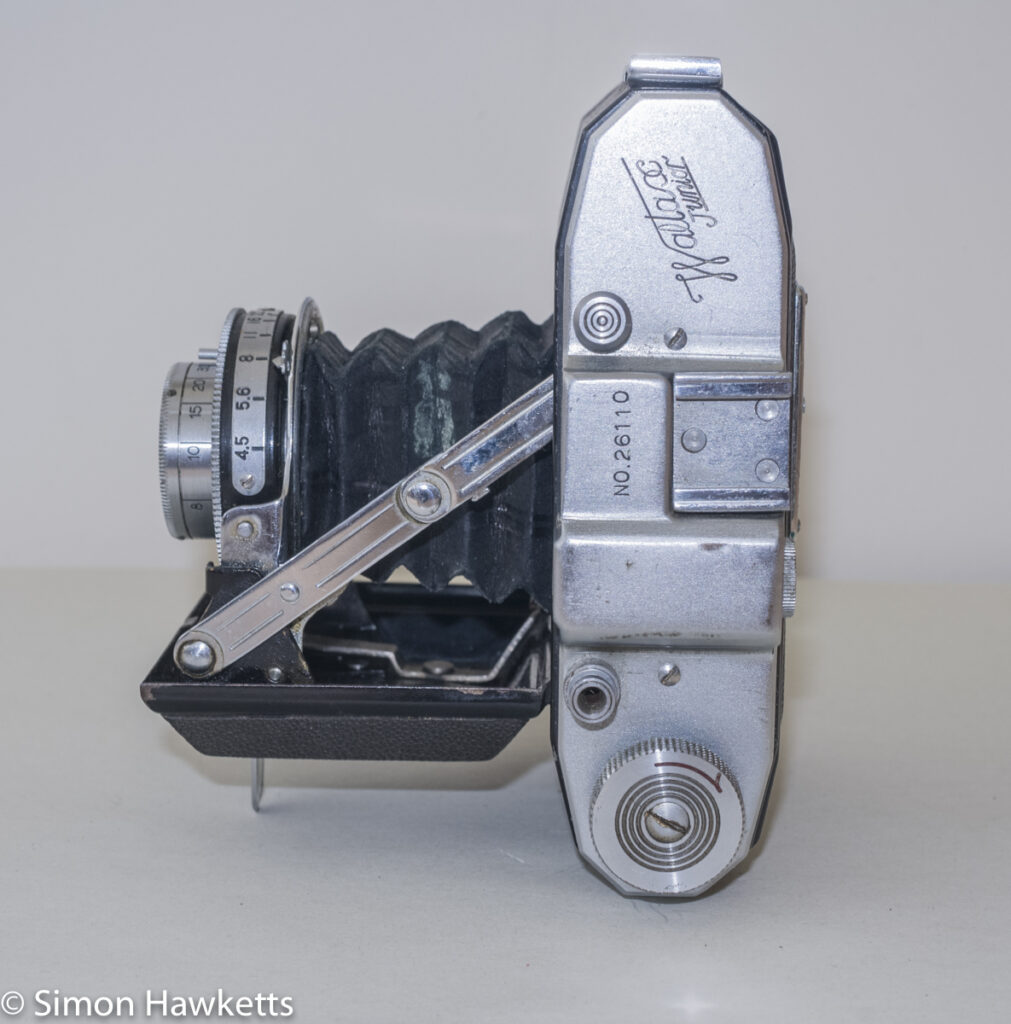

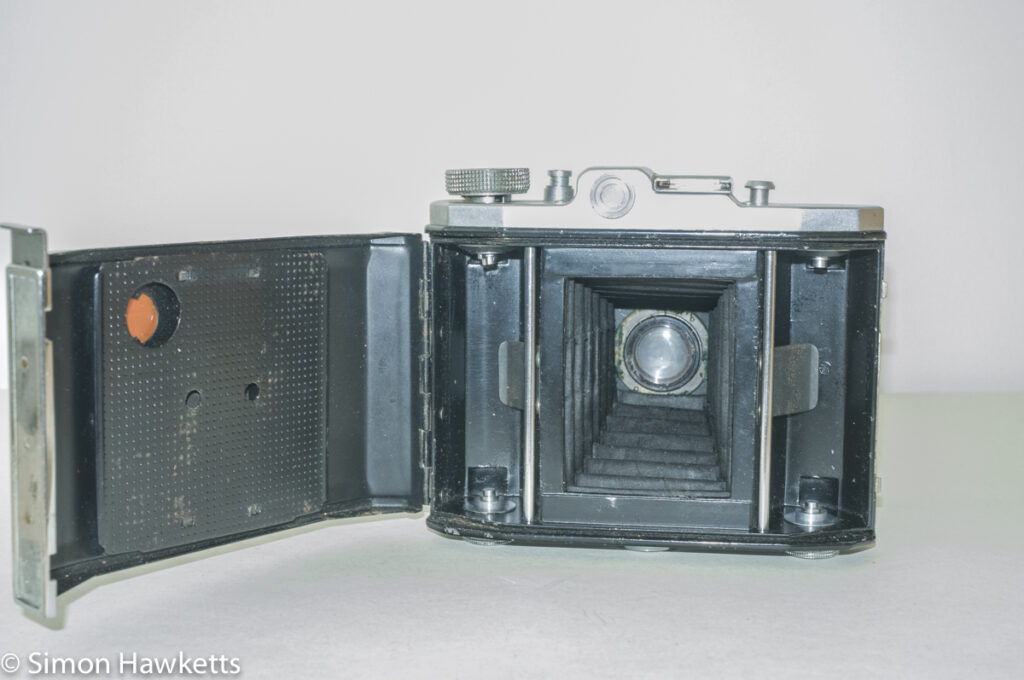
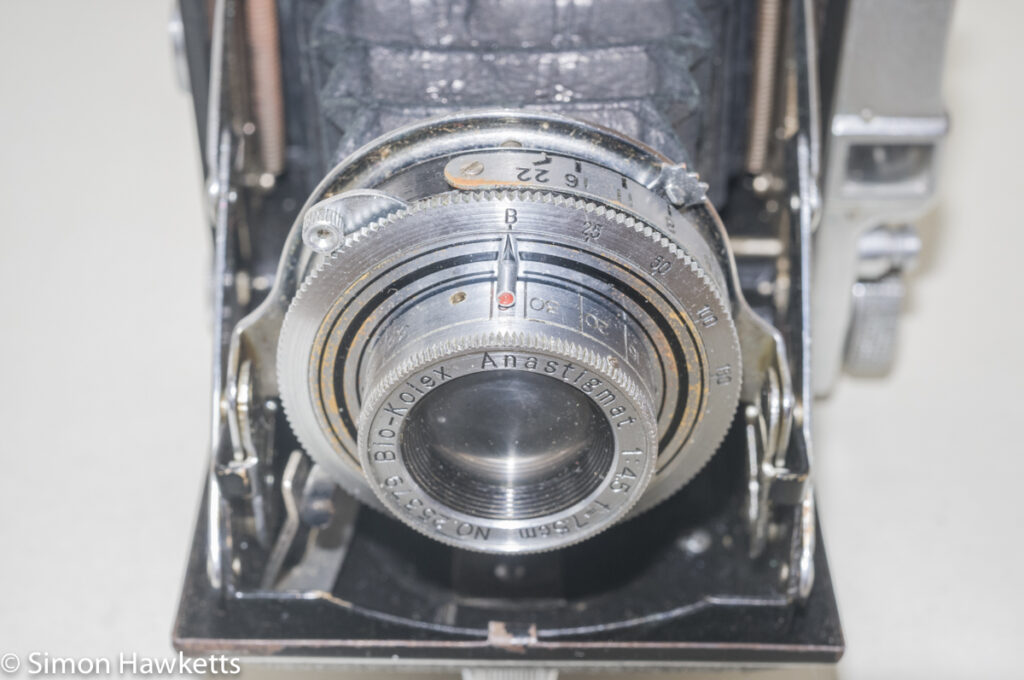
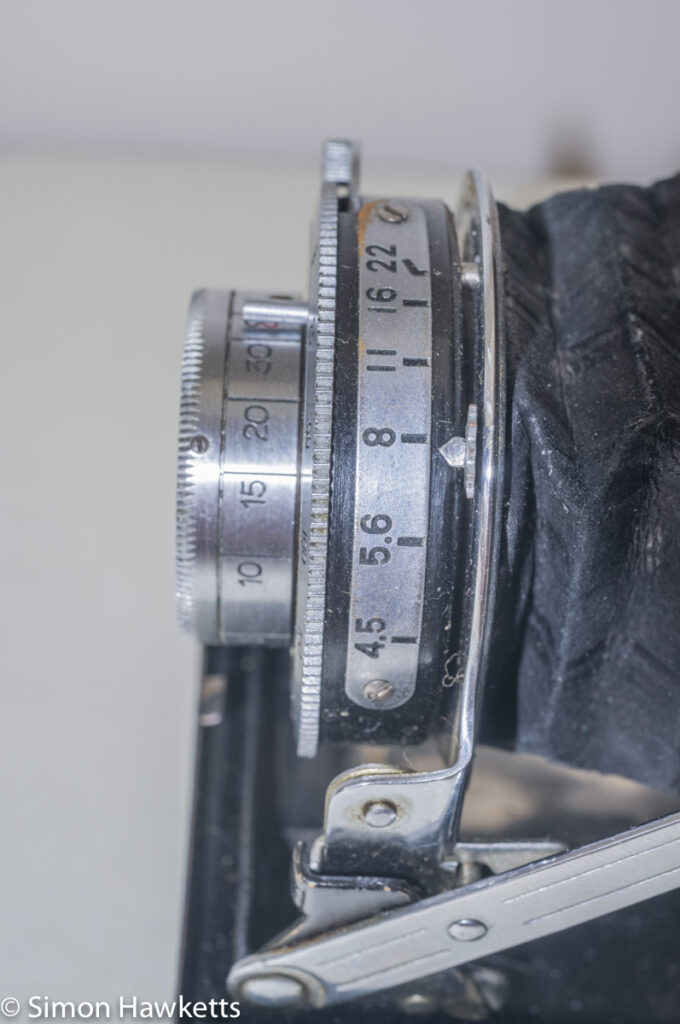
My Waltax Junior Camera
I bought my copy of the Waltax Junior on eBay for a few pounds in an unknown condition.
It’s certainly true to say that my camera has a few issues which stop it from being a usable, photographic tool at the moment.
The stop on the focus ring, which is designed to stop the lens being completely unscrewed from the front of the shutter, is missing and the focus itself is very loose. I suspect if I set the focus and took a picture, the lens wouldn’t actually move, but it seems very loose.
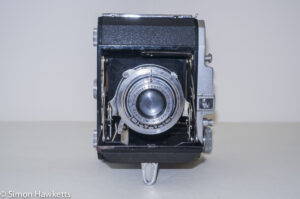
Another problem is with the shutter release because when the camera bellows are opened, the shutter release on the shutter itself gets caught on the small lever which is supposed to activate it, and the lens and shutter assembly ends up sitting at an angle. This is easy enough to sort out by pulling the actuator out of the way and straightening the lens assembly, but the shutter release button on the camera doesn’t actually trigger the shutter.
I think these two problems related and caused by a problem with the spring which pushes against the shutter actuator rod. Without enough spring tension, the actuator lever is in the wrong position and can’t move enough when the button is pressed.
The shutter itself, and the aperture system seem fine, and the bellows are light tight, so with a bit of work the Waltax could be made to work again.
Cosmetically the camera is grubby, but that is to be expected for a camera of this age.
The Waltax Junior Description
As I said in the intro this is a relatively cheap, snap shot camera which was made in the early 1950s.
There is no automation to any of the camera’s function. The photographer is responsible for
- Checking the light level
- Setting the exposure
- Winding the film
- Cocking the shutter
- Focusing the image
- Taking the picture.
There are no mechanisms for making sure only one picture is taken on a frame, or for remembering to wind the film on – everything came down to the photographer. However, although the list above seems like a lot of things to remember, I suspect since all cameras in this class were like that it was probably easier to remember to do all these things – people learnt methods to make sure they did the correct thing.
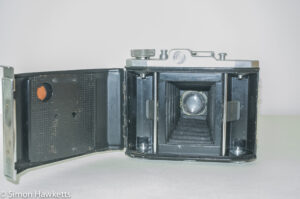
The camera takes 16 pictures on a roll of 120 format film, and they are taken in vertical format when the camera is held in a conventional way – i.e. with the camera held horizontally. To take a landscape format picture the camera needs to be held in the vertical position. This seems counterintuitive, but it’s the result of the film being moved across the back of the camera from side to side so again, it’s a thing which probably seemed less odd to people who used this camera and were used to it.
The good thing about all folding format cameras it that they achieve a large negative size in quite a small camera body size. At the time, having a large negative was quite important, especially in a snapshot camera because most people would not have enlargements made but would have contact prints made from the negative. This means that in effect, the camera produces 16 pictures of 6 cm x 4.5 cm.
The shutter and lens are of a make which I’m not familiar with, so if I get the camera fully operational I’ll run a roll of FP-4 through it and publish the results.
The Waltax Junior Specifications
- Medium format, folding camera
- Okako shutter with 4 speeds (1/150, 1/100, 1/50, 1/25) plus bulb
- Quick release button to open the bellows
- Top mounted shutter release button
- Manually cocked shutter
- Frame window with shutter on camera back
- 75mm f/4.5 Bio-Kolex lens with aperture up to f/22
- Table top stand on camera front
- Sprung film release spigots for easy loading
- Negative size 6×4.5 vertical format
- Lens Ser No: 25379
- Camera Ser No: 26110
Discover more from Everything Vintage
Subscribe to get the latest posts sent to your email.

